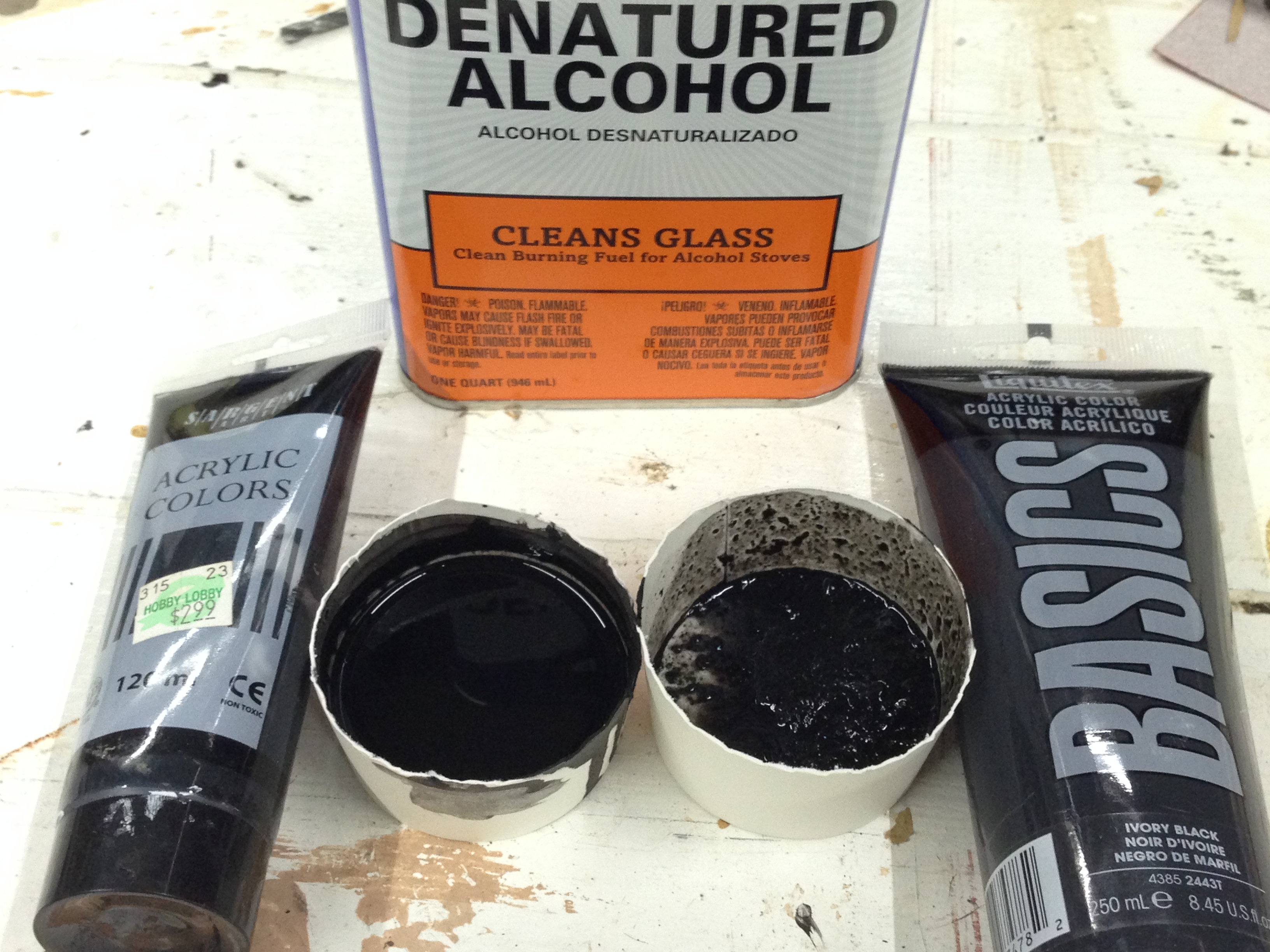I was recently weathering a prop I’m working on. To get some grime and age on it, I decided to thin some black acrylic paint down with denatured alcohol to make a wash. I had two types of black acrylic paint laying around: Sargent and Liquitex.
They are both pretty cheap, share the same pigments, have similar consistencies, and dry to the same color. So they should be exactly the same, right?

As you can see in the photo above, the Liquitex immediately clumped up when I began to mix it with alcohol; it turned to little globs and flakes that refused to blend in with the rest of the liquid. The Sargent on the other hand blended easily into the alcohol, making a silky smooth wash that was ready to distress my prop.
Now don’t get me wrong, I use the Liquitex paints all the time; it’s great to have a range of colors ready to go to touch up a prop or add a spot of color. But it’s obviously not made to be thinned. Some paints are better at being thinned, some mix better with other colors, some have purer pigments. Paints have a whole bunch of ingredients in them that make them act differently than each other, even within the broad categories of “acrylic” or “oil” or “lacquer”.
This is why your scenic artist favors scenic paints for certain tasks over hardware store paint. Sure, you can get some similar colors, but when it comes to mixing colors, making glazes, or just thinning them down, the cheaper hardware store paint often turns to crud.




